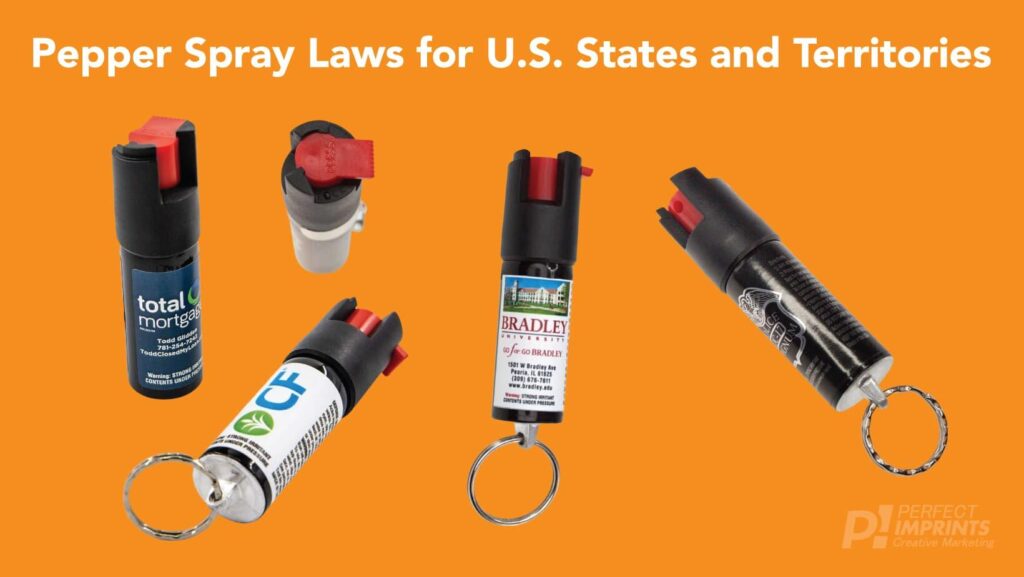Table of Contents
- States Taking the Lead on Local Pepper Spray Regulations
- Understanding the Legal Nuances of City and County Bans
- Impacts of Pepper Spray Restrictions on Community Safety
- Policy Recommendations for Navigating and Harmonizing Local Bans
- Final Thoughts
States Taking the Lead on Local Pepper Spray Regulations
As concerns surrounding self-defense and public safety continue to evolve, several states have empowered local governments to enact specific regulations on pepper spray possession and usage. This decentralized approach allows cities and counties to address unique community needs, resulting in a patchwork of rules that can vary significantly even within the same state. For example, some municipalities may impose strict age limits, registration requirements, or restrict the size and concentration of pepper spray canisters. Such local initiatives underscore the importance of understanding the distinct legal landscape before carrying or purchasing pepper spray.
Key characteristics of local pepper spray ordinances often include:
- Mandated safety training or permits for possession
- Restrictions on the sale of pepper spray to minors
- Limitations on the maximum amount of active ingredient allowed
- Designated no-carry zones, such as government buildings or schools
- Variations in enforcement, penalties, and reporting procedures
By placing regulatory authority close to the communities affected, states offer a flexible framework that can adapt to changing public sentiments and local crime trends. However, this also creates challenges for travelers and residents who must stay informed of multiple overlapping jurisdictions. Awareness and compliance with these localized rules not only help avoid legal complications but also foster responsible, effective use of pepper spray as a protective tool.
Understanding the Legal Nuances of City and County Bans
Local jurisdictions often enact their own regulations regarding the possession and use of pepper spray, leading to a complex legal landscape. Unlike state-wide laws, city and county bans can vary not only in terms of legality but also in restrictions on concentration levels, container size, and required permits. For example, some municipalities might prohibit pepper spray altogether, while others allow it exclusively for specific self-defense scenarios. This patchwork of rules means that what is legal in one county could be illegal just a few miles away, making it crucial for residents and visitors to stay informed about localized ordinances.
The enforcement of these bans typically hinges on several legal nuances, including how “self-defense” is defined and what penalties apply for possession or misuse. It’s important to note that local governments have the authority to impose stricter regulations than those at the state level, leveraging their police powers to address community safety concerns. Key factors to consider include:
- Jurisdictional variances: Understanding specific city or county codes is essential.
- Licensing and permits: Some areas mandate official authorization to carry pepper spray.
- Penalties and legal consequences: These can range from fines to criminal charges depending on the offense.
- Interplay with state laws: Local bans do not negate state regulations but add an additional layer of compliance.
Impacts of Pepper Spray Restrictions on Community Safety
Limiting access to pepper spray within certain jurisdictions has nuanced repercussions on public safety dynamics. While proponents argue that such restrictions reduce instances of misuse and accidental injuries, critics highlight potential drawbacks in personal defense capabilities, particularly for vulnerable populations. In areas enforcing bans, residents often must rely more heavily on alternative self-protection strategies, which may not offer the immediacy or non-lethal advantage that pepper spray provides. This creates a complex safety landscape where the intention of reducing harm must be balanced against empowering individuals to effectively deter threats.
Studies and community reports suggest that the absence of pepper spray can contribute to:
- Increased reliance on physical confrontations, which may elevate injury risks during assaults.
- Greater demand on law enforcement, as citizens may call for intervention in situations that might otherwise be defused quickly.
- Unequal safety outcomes, where those without access to alternative defense tools feel disproportionately exposed.
Ultimately, these factors emphasize the need for nuanced policymaking that considers both public security objectives and individual safety rights within the broader community context.
Policy Recommendations for Navigating and Harmonizing Local Bans
To effectively address the complexities introduced by local pepper spray bans, lawmakers should consider a framework that upholds clear communication and legal cohesion. First and foremost, standardizing regulations at the state level can provide uniformity, allowing citizens to understand their rights and responsibilities without confusion. When local ordinances must diverge, establishing a formal process that ensures these variations are transparently documented and easily accessible is essential. Collaboration between state and municipal officials can pave the way for harmonized enforcement protocols, reducing punitive discrepancies and fostering public trust.
Moreover, empowering communities through education campaigns about both state and local pepper spray regulations can significantly enhance compliance. These campaigns should focus on:
- Raising awareness about safe and legal pepper spray use;
- Clarifying the consequences of violating local bans;
- Providing resources for residents to verify rules in their jurisdictions.
Ultimately, such policy recommendations are instrumental in balancing public safety concerns with individual rights while mitigating the patchwork of restrictions that currently challenge residents and law enforcement alike.
Final Thoughts
In navigating the complex landscape of pepper spray regulations across the United States, it’s clear that local city and county bans add an important layer of nuance to state laws. For residents and travelers alike, understanding these localized restrictions is crucial to staying compliant and ensuring personal safety. As more communities weigh the benefits and risks of pepper spray possession, staying informed on evolving policies will empower individuals to make responsible choices. Whether you’re considering pepper spray for self-defense or simply want to stay updated on your rights, keeping an eye on both state and local regulations is essential in today’s ever-changing legal environment.Check Our Other Blogs
- StunGun – Your Trusted Source for Stun Guns, Laws, and Self-Defense Tips
- PepperSprayLaws – Your Trusted Resource for Pepper Spray Information
- StunGunLaws – Your Trusted Guide to Stun Gun Legality and Safety




